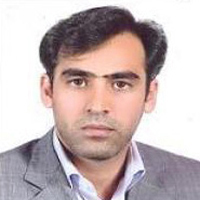Spatial Analysis of Regional Disparities Between the Central and Border Areas of Iran
Author(s):
Abstract:
IntroductionRegional inequalities between border and central regions of most third world countries is inevitable, that created Centralized system of planning structures in the historical process. Border areas of Iran have 16 provinces and central regions of the 14 provinces (including Alborz in Tehran Province). Approximately 50 percent of the area (50/7 percent of the population) belonging in the country's border regions. This revealed that 50 percent of the country's development should be concentrated in border areas. Be created regional balance in the space of Iran. While the focus of the facilities and services in centre the remoteness and deprivation some of the border provinces. Therefore in this study is trying to changes in population and development indicators in the border and central areas of Iran and the comparison to be investigated. To understanding of various dimensions and angles, the inequalities the spatial structure of country is determined. Review theoretical literature on the development of border areas shows that in this study, develop in three approaches the traditional approach where, approach to cross-border cooperation and popular approach to border has been studied and analyzed.MethodologyThis study has been done with descriptive-analytical method; the main objective of this research understands the pattern of development space of Iran. To achieve the goal, border areas with the central areas are compared. Index of 30 indicators of economic, social, cultural and industrial that data from the Statistical Center of Iran, General Population and Housing Census and Statistical Yearbook of the provinces based in 2006 statistics are collected. Also, will be explored the reform of economic structures - political, the political economy, ideology and political philosophy of governance. Therefore, using the Shannon entropy weighting factors have been studied weight. Then the ratings were from 30 provinces Tapsis. Finally, the test T-test, border and central regions were compared and comparative study.Discussion and ResultsUsing entropy weighting and tapsis model, Tehran province (including Alborz in Tehran province) with 0/6739 as the most developed province and Ilam province with 0/0078 as the most deprived province. Development gap between Tehran and Ilam is 124/859. This figure shows large distances of the first and most deprived provinces of Iran that the spatial structure of regional disparities in Iran is very high. Results of analysis based on the average K cluster it was found that the province with 0/2654 is developed in border areas that among the 30 provinces in the third level is dedicated to the development. The low level of development in border areas, East Azarbaijan and Khuzestan provinces, respectively in 0/1307 and 0/0821 are located. The provinces of Isfahan Among in central areas of high development levels and the provinces of Fars, Yazd and Qom have moderate levels of development. The province of Kerman, Semnan and Hamedan are located in the lower levels of development. By using the coefficient of dispersion, Degree of regional disparities between central and border areas are 1/6 that Show a high disparity between the border regions and central areas. Given this, the average development in border regions 0/057 and the central regions of 0/169 can be expressed in the central regions of Iran, about 3 times higher than the border areas have been developed. Degree of regional disparities in the border areas 1/08 and the central areas are 1/43 that These figures show the inequality and the divergence between the provinces of the country that breakdown of statistics related to the elimination of Tehran and the Alborz province, regional inequalities within the central areas of the 2/5 times reduced and is 0/63 and relative convergence in the central areas will be created. Also, investigate whether the difference between central areas and border areas of Iran the value of the T 1/793 with significance is 0/084. Show that n with % 90 confidences, the development of border areas and central areas of Iran; there is a difference that with the removal of Khorasan Razavi Province the T to 2/008 with a %95 increases.ConclusionAccording to surveys, not only between development of border and central areas differences and inequalities there are, but the border and central areas there are also differences. As long as the cause of areas inequality is not reduced, the reduction of regional inequalities will not be outsourced. And model development center - around the space as the dominant model in Iran. The central areas of the development of border areas have much better conditions and this patern shows that we are much closer to the Central areas of Iran Provinces are more developed. Top-down government planning and transfer of powers to lower levels of divisions caused by the lack of understanding of normal capacity is proper and appropriate expectations. And geographical injustice of algebraic inequalities in the country has sparked a biological foundation. Inequality and exclusion, as it must be acknowledged that the developments of a coin, a direct threat to the security community are considered. Any development plan without regard to the general plan to eliminate inequalities can not be done. Therefore, the development of resources in a major role in strengthening cooperation between border provinces can have a border with neighboring countries and can accelerate the development process at the national level.
Keywords:
Language:
Persian
Published:
Geopolitics, Volume:8 Issue: 1, 2012
Page:
214
magiran.com/p1024359
دانلود و مطالعه متن این مقاله با یکی از روشهای زیر امکان پذیر است:
اشتراک شخصی
با عضویت و پرداخت آنلاین حق اشتراک یکساله به مبلغ 1,390,000ريال میتوانید 70 عنوان مطلب دانلود کنید!
اشتراک سازمانی
به کتابخانه دانشگاه یا محل کار خود پیشنهاد کنید تا اشتراک سازمانی این پایگاه را برای دسترسی نامحدود همه کاربران به متن مطالب تهیه نمایند!
توجه!
- حق عضویت دریافتی صرف حمایت از نشریات عضو و نگهداری، تکمیل و توسعه مگیران میشود.
- پرداخت حق اشتراک و دانلود مقالات اجازه بازنشر آن در سایر رسانههای چاپی و دیجیتال را به کاربر نمیدهد.
In order to view content subscription is required
Personal subscription
Subscribe magiran.com for 70 € euros via PayPal and download 70 articles during a year.
Organization subscription
Please contact us to subscribe your university or library for unlimited access!



